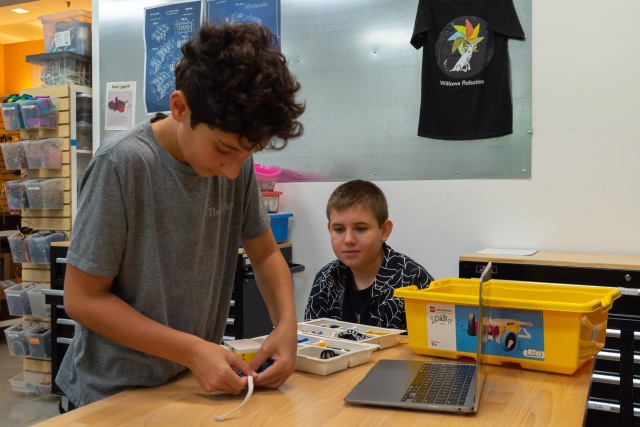S.T.E.M., the term coined to abbreviate Science, Technology, Engineering, and Math, has become a staple in early education, with curricula evolving to recognize the importance of knowledge that intersects with multiple subject areas. Moreover, many have begun to acknowledge S.T.E.A.M., with art included to emphasize the need for creative expression and inquiry, in conjunction with more technical skills. Yet The Willows takes this one step further, suggesting that maker skills should also be considered in this educational intersection, thus creating S.T.E.A.M2. This union of disciplines, coupled with The Willows’ dedication to experiential learning, ensures that we provide students with a nurturing environment where they can express creativity through a variety of educational and engaging hands-on experiences.
Before discussing our program in a bit more detail, it’s essential to outline what we mean when we discuss “maker” skills and activities. There’s a short video from Adam Savage, former host of MythBusters and prominent maker himself, that demonstrates the approach The Willows uses in our maker program.
Being able to “make something from nothing using your point of view” and “see a need in the world, have a desire to realize something, and make it exist where it did not exist” is the mentality we not only encourage, but instill within our students. A maker depends on creativity and ingenuity to produce their unique vision, in whatever form they see fit. That’s why our program not only focuses on the challenges that inevitably arise when physically constructing an object, but also the mental and emotional hurdles that we must clear when problem-solving and brainstorming. Great learning is open-ended, dynamic, authentic, and interconnected, each of which are at the core of making. The skills that students learn through maker, both technical and investigative, apply not only to their acquisition of other subject areas, but also to their future endeavors and goals.
On top of the skills students acquire while making, they can also practice crafting and building with the wide variety of tools we offer. Using LEGO robotics and Bee-Bots, students can make their own bot and practice computer programming to make their bot perform a specific task. Additionally, maker instructors have often planned activities with 3D printers, allowing students to digitally design, and then produce their ideas into tangible, fully realized projects! Most importantly though, maker projects are not determined by the kind of material or quality of tool used, but by the idea or observation itself. With all this said, making takes action, and what better way to share our maker program than with examples of projects from this school year!
Cooper Ballantine (pictured in image 6), a 4th Grade and maker teacher can offer some context to the photo gallery above. Discussing images 1-5, he shares “Here students explore skills with motion, force, and gravity. Based on the theories of Piaget, building and exploring with ramps and pathways offers students a constructivist approach to physical science. Ramps and pathways deeply engage children in reasoning about physical objects, combining structural engineering with design.” Images 6-9 show our students, building, programming, and experimenting with a variety of robotics tools. Middle School students have had the opportunity to work with Lego Spike robotics kits, wich allow them to fully create a bot from the ground up, and program it using its dedicated software. These two projects not only teach students the building blocks for future maker creations, but are also intrinsically tied to creativity and problem solving.
There’s a saying “Give a man a fish and you feed him for a day. Teach a man to fish and you feed him for a lifetime” Making a positive impact on students is, and will always be The Willows’ goal, but after they depart our school, it is up to the student to determine what impact they will have on the world. The maker program not only teaches students to be creative and think outside the box but also teaches them grit and perseverance, two qualities they will absolutely need to succeed. Solutions to problems are often far more complex than they may initially seem, however, it is our belief that the ingenuity and resolve that students learn in maker will provide them with the social-emotional tools to plan, design, and execute their ideas into actualized resolutions.









